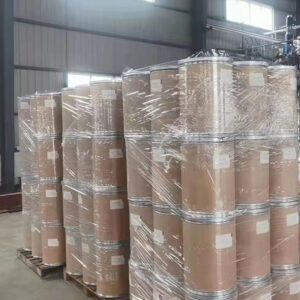What is Ammonium Tartrate?
Ammonium tartrate, also known as 2,3-dihydroxy-[r-(r*, r*)]-diammonium succinate, is a crystalline compound. It has the chemical formula (NH₄)₂C₄H₄O₆, CAS No. 3164-29-2, a molecular weight of 184.15 g/mol, and a density of 1.061 g/cm³. This compound forms through the reaction of tartaric acid and ammonium carbonate. Its primary applications include serving as an analytical reagent and an intermediate in organic synthesis.
Uses in Cell Culture and Chromatography
In cell culture and chromatography, ammonium tartrate plays a significant role. Notably, it can replace sodium for analyzing modified oligonucleotides using matrix-assisted laser desorption/post-ionization source decay (MALDI-PSD). Furthermore, researchers have explored its use in electron spin resonance (ESR) dosimetry. They have found it to be a more sensitive high-dose determination standard than L-alanine.
Physical Properties and Environmental Impact
Ammonium tartrate appears as a white crystalline solid that dissolves in water. While it is beneficial in various applications, it poses environmental hazards, necessitating immediate measures to limit its spread. Industries utilize it in the manufacturing of fabrics and medicines.
Ammonium Tartrate Uses
L-(+)-Ammonium tartrate is valuable in both the fabric and pharmaceutical sectors. Additionally, it aids in examining protein structures and serves as a biochemical reagent, organic barrier, and chelator in proteomics. Moreover, it provides nitrogen in biological applications and cell culture media. Importantly, it has been utilized for crystal optimization studies and initial diffraction data analysis of the Smad1 MH1 domain bound to palindromic SBE DNA elements.
In addition to its roles in textiles and medicine, ammonium tartrate serves as a masking agent for determining lead, nickel, phosphorus, and niobium. It is also an analytical reagent and an intermediate in organic synthesis.
Production Method of Ammonium Tartrate
To produce ammonium tartrate, start by dissolving tartaric acid in water. Gradually add ammonium carbonate until the solution becomes weakly alkaline, as indicated by phenolphthalein. Next, heat the mixture for 20-30 minutes and then vaporize it in a water bath. Once a crystalline film appears, filter quickly, cool the filtrate, and dry the crystals at 40°C to obtain the finished product, achieving an 80% yield.
Alternatively, introduce ammonia gas into an ethanol solution of tartaric acid. This process creates an amorphous, grainy precipitate. After filtering the mixture, wash it with ethanol and ether, and then dry to yield the final product.







المراجعات
لا توجد مراجعات بعد.